#SOCORRO
Text
Oceanic manta rays are the largest species of ray in the world, with a wingspan of up to 26 feet. Despite their immense size, they are completely harmless to divers - they have no barbs to speak of, unlike stingrays, and spend their time filtering the water for plankton with the help of their cephalic lobes (the big paddles on each side of their mouths). Socorran mantas have grown very used to divers, and often seek out our bubble curtains seemingly because they feel good and may help clear away parasites!
#manta#mobula birostris#endangered#dive footage#scuba#marine biology#marine bio#marine biology studyblr#marine bio studyblr#biology#zoology#marine life#animals#sea life#elasmobranchs#chondrichthyes#manta ray#socorro#mexico#cute animals
213 notes
·
View notes
Text
Às vezes choramos, gritamos, clamamos sem parar pelo socorro de Deus e esperamos pelo socorro milagroso. Não me entenda mal, Deus pode fazer isso, mas - às vezes - o socorro que pedimos a Deus está na renúncia que Ele nos direcionou a fazer. Confie na direção que Ele já te deu.
carol giovannini, chance com Deus.
#projetofalandonocéu#deus#diariodeumaadoradora#vida#jesus#devocional#socorro#é#isso#milagre#renúncia#espírito santo
324 notes
·
View notes
Text

socorro, new mexico.
september 2023
© tag christof
#tag christof#america is dead#on the road#diner#1970s#socorro#new mexico#leica m#voigtlander#interiors
321 notes
·
View notes
Text
Tentar ficar bem todos os dias é desanimador.
#vazio#depressao#socorro#medo#destruiu#vazio existencial#projetoalmaflorida#projetocores#projetoflorejo#projetosautorais#projetovelhopoema#pequenasescritoras#projetoreconhecidos#tristeza#desistir#morrer#chorar#choro#fraqueza#desânimo#preguiça#interação#fugir
118 notes
·
View notes
Text

comm w iconic lacey and socorro✨
commission info
#lacey's flash games#lacey's wardrobe#lacey's diner#lacey flash games#my art#full art#imigrantes road#socorro#commission
218 notes
·
View notes
Text

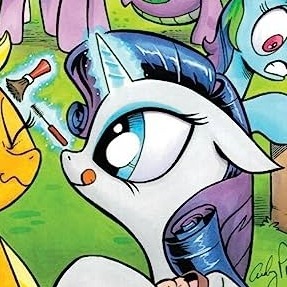



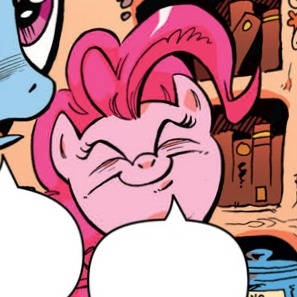

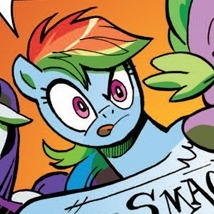
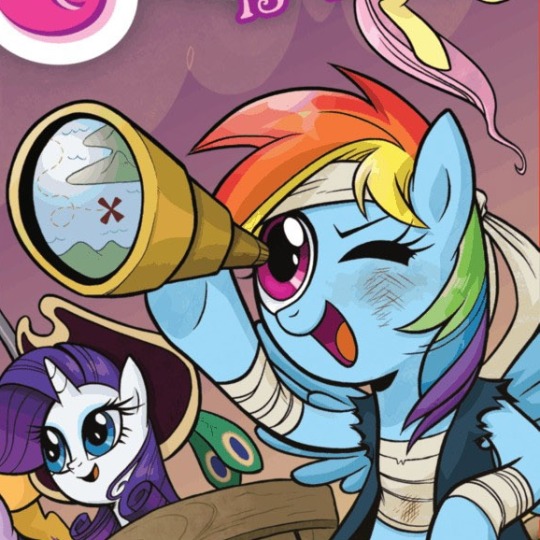

mlp comics icons ! (ㆁωㆁ)
#mlp fandom#mlp icons#mlp g4#mlp fim#mlp comics#my little pony icons#my little pony#brony fandom#brony#pinkie pie#apple jack#rarity#rarijack#fluttershy#rainbow dash#twilight sparkle#mlp art#mlp#socorro#lgbtqia#lgbtq community
358 notes
·
View notes
Text
Me when I hear somebody call/write “Spider Quaritch” instead of “Spider Socorro”:

#like excuse me??#Spider QUARITCH??#this poor boy is trying so hard to separate himself from his shitty dad#and you force his LAST NAME UPON HIM???#atwow#atwow spider#avatar spider#spider socorro#SOCORRO#NOT QUARITCH#avatar 2#avatar way of water#avatar quaritch#avatar#spider avatar
239 notes
·
View notes
Text

San Miguel Mission Chapel is considered the oldest church still in use in the United States. The original church was built in 1598. Nuestra Señora de Perpetuo was constructed between 1615 – 1626. That is the church that exists today. The walls are approximately 5 feet wide, with huge, carved vigas. The community changed the name of the church between 1800 and 1801.
51 notes
·
View notes
Text

Lacey and Socorro!
#lacey games#imigrantes road#lacey's flash games#lacey's petshop#lacey's diner#lacey's wardrobe#socorro#socorro imigrantes
38 notes
·
View notes
Text
Editor's Note from The Black Sands of Socorro by Patricia A. Jackson

While researching Patricia A. Jackson’s entire body of Star Wars work for a short story anthology, I came across the West End Games sourcebook Star Wars: The Black Sands of Socorro (1997.) It’s a crucial work of Star Wars ephemera: The first creator of color writing for Star Wars in an official capacity, writing not just about individual characters of color, but centering entire cultures populated by non-white characters. A young Black woman in the 1990s wrote science fiction for Star Wars, worldbuilding with concepts like antislavery, indigeneity, linguistic divergence, and settler colonialism...while Disney-Lucasfilm in the 2020s ineffectually positions Star Wars as a post-racial fantasy.
I non-hyperbolically refer to Patricia A. Jackson as the “Octavia Butler of Star Wars,” not because fans of color need to be officially sanctioned by Lucasfilm to create Star Wars content, but because of how difficult it is to carve out anti-racist space in a transmedia storytelling empire. Challenging even in transformational fandom spaces (e.g. fan works), to broach race in affirmational fandom spaces—or while writing content for the property holder—is to be unflinchingly subversive.
And Jackson did it first. In an interview with Rob Wolf in 2022, Jackson described her experience writing race into Star Wars in the 1990s as an “experiment.” The planet, peoples, and cultures of Socorro were a way for Jackson to obliquely, yet concretely, center Blackness and racial justice into Star Wars, pushing the racial allegory constrained by the original trilogy to its limits.
Since it’s inception, Star Wars has spent much of it’s storytelling on the fringes of the galaxy (whether it’s Tatooine or Jakku, Nevarro or Ajan Kloss.) The Black Sands of Socorro is an extension of that trope, but where the Star Wars films used indigeneity as set dressing (eg. “Sand People”, Ewoks, Gungans, etc.) Jackson creates a vivid world where indigenous culture and settler colonists collide; where characters are coded with dark skin and central to the action. The planet Socorro is distinct as a Star Wars setting. As one of the only places in the galaxy where slavery is eradicated with a vengeance, Socorro refuses to let go of a plot line Star Wars media often leaves behind. Socorro is a haven from Imperial fascism, a space where readers are invited to imagine a story that does not center around occupation.
When I learned that Patricia A. Jackson no longer has a physical copy of The Black Sands of Socorro, I realized that I had the materials and the means to create a fanbound hard copy for her home library (well, and also for my own home library.) While this handmade book is not an exact reproduction of the RPG supplement, I hope my renvisioning of the supplement as an in-universe travel guide lives up to the original work.
As the idea of creating a travel guidebook based on the original material percolated, I reflected on the State of Race in Star Wars in the year since I compiled Designs of Fate, an anthology of my favorite Patricia A. Jackson short stories. In May 2022, actress Moses Ingram debuted as Inquisitor Reva Sevander, the deuteragonist in the Dinsey+ streaming Obi-Wan Kenobi series. As predicted by Lucasfilm—and any fan sick of alt-right Star Wars related “whitelash”—Ingram was promptly subjected to a firehose of racialized harassment and misogynoir.
Yep, fascist self-proclaimed fanboys complained about a Black woman Inquisitor in 2022, having no idea (or deliberately whitewashing) that one of creators of the entire freakin’ concept of Inquisitors was a Black woman writing for the Star Wars Adventure Journal three decades ago.
Then, a public facing Star Wars account (@StarWars on Twitter) broke precedent and slapped back at the trolls. Lead actor Ewan McGregor filmed a video retort, posted on @StarWars, stating “racism has no place in this world” and telling off the racist bullies: “you’re no Star Wars fan in my mind.” A few months later, Disney+ debuted it’s second flagship Star Wars streaming series of the year, starring a Latino actor as the protagonist. In the opening episode of Andor, a police chief describes Diego Luna’s eponymous lead as a “dark-featured human,” perhaps the closest the franchise has ever gotten to acknowledging out-of-universe constructions of race, to date. The series explored aspects of imperialism with more depth than Star Wars had previously done on screen, such as the Empire’s treatment of the native people of Aldhani. And, in November, the The Acolyte, a Disney+ series co-developed by Rayne Roberts, announced Amandla Stenberg and Korean actor Lee Jung-jae as its top-billed leads. Stenberg will be the first Gen Z, mixed race, Black, Inuit, queer, and non-binary actor to lead a major Star Wars series.
On the Patricia A. Jackson Star Wars front, in 2022, Jackson’s character Fable Astin was an easter egg in the Obi-Wan Kenobi series. Jackson will again write for Star Wars in an official capacity in From a Certain Point of View: Return of the Jedi, due for publication in Fall 2023. A series about Lando Calrissian, the galaxy’s most famous Socorran, is still in production, so I have my fingers crossed that we may soon see Socorro on camera.
I wonder if this past year will have been a fulcrum year for BIPOC fandom. Maybe Disney has finally realized it’s bad for business that the alt-right uses social media algorithms and Star Wars fan spaces as a soft recruiting ground to radicalize young white men? Maybe Star Wars as a franchise will continue to loudly disavow fan whitelash and firmly position performers of color in true leading roles? I really hope so. On the other hand, as much as I am in favor of increased representation in Star Wars storytelling, I am also troubled by Disney-Lucasfilm’s framing of the Galaxy Far, Far Away (GFFA) as “colorblind.” Recently, Star Wars fans have been asked to accept that in the (a long time ago) sci-fi futurepast GFFA, humans have always been post-racial, and it’s just a coincidence that racialized people were not caught on camera the way white characters have been for years. The galaxy is post-racial and it’s just acoincidence that the movers and shakers of the galaxy have largely been depicted as white men for the past 40 years of media.
For example, in the decade since Disney rebooted the expanded universe, fans have learned that Star Wars’s biggest galactic war criminal to never be depicted on screen is Admiral Rae Sloane, a bisexual Black woman who was the leader of Imperial remnant forces, one of the architects of the First Order, and personal mentor to General Hux. Under Disney-Lucasfilm’s post-racial retcon of the Star Wars universe, the allegorical fascists are intersectional equal opportunity employers (at least in expanded universe content like animation, video games, and novels.) Along those lines, several of the franchise’s newly introduced, prominent women of color have been part of the Empire: Imperial loyalist Cienna Ree (Lost Stars), Inferno Squad leader Iden Versio (Star Wars: Battlefront II) former stormtrooper Jannah (Episode IX), First Order pilot Tamara Ryvora (Star Wars: Resistance), Inquisitor Trilla Sundari (Jedi: Fallen Order), Captain Terisa Kerrill (Star Wars: Squadron) and, most recently, Inquisitor Reva Sevander. Once the sole purview of stodgy, very white and very British men (demonstrably so even in the sequel trilogy movies,) now anyone can be a stooge of the Empire.
That’s not to say that marginalized people can’t collude with fascism, or that there haven’t been heroic characters of color introduced in recent years. Rather, I posit that in order to sell audiences on the post-racial/colorblind GFFA, fascist-of-color characters like Rae Sloane or Giancarlo Esposito’s Moff Gideon (The Mandalorian) are created by necessity. The franchise wants to at once be racially inclusive and yet never directly address race. In Star Wars, real world oppression is primarily explored through allegory—such as Solo (2018)’s bit on droid rights, the clone army, or the myriad of non-human alien bodies that nonetheless are coded with racial stereotypes. A lot has been said about how allegory in sci-fi allows audiences to grapple with inequality from a comfortable distance, and not enough has been said about which audience is being prioritized for comfort.
What does it mean when race is supposedly a non-issue for humans in the GFFA, but creators and actors with marginalized identities cannot participate in Star Wars in any capacity without experiencing identity-targeted harassment? In the past ten years, this has been true even for white women like Kathleen Kennedy and Daisy Ridley, but the vitriol has been most strongly directed towards Black women like Lucasfilm Story Group lead Kiri Hart, author Justina Ireland and The High Republic Show host Krystina Arielle. Can the Galaxy Far, Far Away truly be “colorblind” or “post-racial” (never-racial?) if the narrative continually centers white characters and replicates all the common racial inequities seen in commercialized Hollywood storytelling? Upon the release of The Force Awakens in 2015, critic Andre Seewood aptly described Finn’s positioning in the story as “hyper-tokenism,” even presciently predicting that Finn would continue to be hyper-tokenized in Episodes VIII and IX. As the narrative veered away from Finn, it also left unrealized a stormtrooper rebellion plot line where Finn could have been, in effect, a Black abolitionist. Actor John Boyega’s critique of his experience in the sequel trilogy aligns with Seewald’s assessment: “Do not bring out a Black character, market them to be much more important to the franchise than they are and then have them pushed to the side.”
Published in 1997, The Black Sands of Socorro came before Finn, before Mace Windu, back when all the melanin of Star Wars could be found in Billy Dee Williams’s singular swagger and James Earl Jones’s distinctive voice. Back then, the most prominent Black actress in the original trilogy was dancer Femi Taylor, who played Oola, the hypersexualized green twi’lek fed to the rancor in Return of the Jedi. Bantam Spectra, the publisher that held the license for Star Wars from 1991 to 1999, had no leading characters of color in its’ Expanded Universe. The first full length Star Wars novel by a writer of color, Steven Barnes’s The Cestus Deception15, would not be published until 2004. Even though the book featured two protagonists of color, they would not be depicted on the cover. At Comic-Con in 2010, I spoke with Tom Taylor, a white Australian comic book writer who tried to make the lead family in Star Wars: Invasion (2009) a Black one, but was shut down during the creative process. The comic instead depicts a family of blondes, because the publishers did not think fans would embrace leads of color. All this to say, the inclusion of melanated characters in Star Wars has been so, so hard fought. It’s incredible The Black Sands of Socorro exists at all. It’s more than worthy of celebration, and I’m floored that more attention has not been brought to it.
Patricia A. Jackson is a smuggler.
This sourcebook was explicitly written to assist fans in telling their own Star Wars stories, and in it Patricia A. Jackson smuggled in emphatic allusions to the Black Panther movement and the trans-Atlantic slave trade, smuggled in commentary on indigeneity and settler colonialism, and smuggled in multiple ways for fans to envision characters of color. Her writing has consistently added richness to the GFFA, and in The Black Sands of Socorro she envisions multiple histories for multiple cultures coded as non-white. She ensured the existence of not mere tokens, but flourishing societies of people of color in Star Wars.
The coda for The Last Jedi again shows how perilously close to tokenization characters of color, particularly Black characters, are in modern day Star Wars. In this film, the franchise returns to itsprevious exploration of slavery with the depiction of enslaved children on Canto Bight. The last speaking lines of the film are from Oniho Zaya (played by Josiah Oniha, a young Black British actor) who recounts Luke Skywalker’s heroic exploits to the other children. The film then closes out by showing that one of the downtrodden children is Force-sensitive—a future hero in the Star Wars mythos. In a film where every single Force-user depicted is white, the next generation kid with the potential is, again, a young white boy. Once again, the Black character can only serve the narrative in a supporting role. A franchise depicting a colorblind fantasy continually reifies racial and gender hierarchies in America. With The Acolyte, scheduled for release in 2024, it’s possible the franchise may finally be shifting past hyper-tokenism. In the meantime, fans of color and our erstwhile allies will continue doodling in the margins.
In the end, the sequel trilogy left the Canto Bight plot line (and the overarching slavery plot line started in Episode I) unresolved. I’d like to think the Black Bha’lir strafed Canto Bight and grabbed those kids. It seems like something they would do. Out among the stars, Oniho Zaya is adventuring with Drake Paulsen, and his story does not bracket another characters’; he is central. The Black Sands of Socorro is a launching pad for stories like that. It represents how fans of color have always carved out pieces of Star Wars for ourselves.
#socorro#star wars legends#swrepmatters#star wars adventure journal#star wars d6#patricia a. jackson#fanbinding#binders note
29 notes
·
View notes
Text
🌑 Black beauty! This manta is an example of the uncommon melanistic manta - a color mutation that results in more dark pigmentation than normal (like the opposite of albinism, which is a lack of pigmentation!) It lacks the white chevron on its back and white belly, making it truly striking.
#manta#melanism#socorro#marine biology#chondrichthyes#elasmos#mobula birostris#marine bio#marine biology studyblr#marine bio studyblr#biology#zoology#marine life#animals#sea life#ocean life#ocean#scuba#scuba diving
22 notes
·
View notes
Photo

“Déjame penar, déjame sufrir
Que llaga mía es una menos en tí.
Déjame sangrar, déjame sentir
Que un corte mío es caricia en tí
Déjame llorar, déjame gemir
Que todas mis lágrimas son solo para mí.”
He vuelto a jugar a Blasphemous, he vuelto a dibujar.
Fanart de Socorro, la Señora de la agonía perpetua.
~~~
“Let me grieve, let me suffer
For one wound on me is one less on you
Let me bleed, let me feel
For a cut on me is a caress for you
Let me cry, let me moan
As all of my tears are only for me.”
I’ve played again Blasphemous, I’ve drawn again.
Fanart based on Socorro, the lady of the perpetual agony.
#Socorro#Blasphemous#blasphemousgame#the game kitchen#Team17Ltd#Cleofás#Saeta Dolorosa#fanart#fanartblasphemous#myart#solarisart#blasphemous II
125 notes
·
View notes
Text



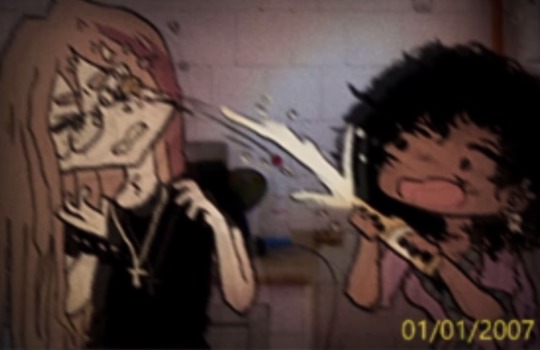



Happy New Year 2007!
youtube
#imigrantes road#kami#socorro#bento#elize#kami imigrantes#socorro imigrantes#bento imigrantes#elize imigrantes#ghosttundra#Youtube
22 notes
·
View notes
Text
Já se passaram quatro meses...
Eu ainda não consigo acreditar que você fez isso comigo....
Achei que você poderia pelo menos ter um pouco de consideração...
Poxa.... eu fui tão bom para você.... o quanto eu te ajudei.... E quanto que eu chorei do seu lado quando você sentia dor...quando a gente ama alguém as dores passa a ser da gente também.... assim como a alegria.....Eu cuidei de você...de todos os lados.... todos os sentidos..... E o que mais me surpreende é eu ainda sentir falta de você.... mesmo depois de tudo que você fez comigo...sinto sua falta.....falta do seu corpo....do seu beijo...do seu perfume... da sua voz....do seu sorriso.... Já são quatro meses..... E é ao mesmo tempo que eu não te vejo..... Gostaria de saber como você está.... Mas não podemos nos comunicar.... Não faz bem.... Não faz bem mais para mim do que para você..... Você sempre soube lidar com tantas situações adversas....E acho que essa é só mais uma que você vai tirar de letra.... Mas eu não.....eu sempre sofri mais com os terminos dos relacionamentos..... Eu sempre demorei para tirar a pessoa de dentro do meu coração e com você tá sendo muito difícil também..... Mesmo sabendo que você deve estar com outras pessoas.... Beijando outras bocas.... Fazendo amor...... Eu não consigo ser assim..... Eu deveria tentar.... Mas acho que isso só vai me machucar mais... Dói demais....Ainda mais quando me vejo nesta solidão... nesta casa bagunçada....e é nessas horas que eu mais penso....Que nunca deveria ter te conhecido......
Nunca mesmo....
14 notes
·
View notes
Text
ㅤㅤㅤㅤㅤㅤㅤ𝗈𝗌 𝖺𝗋𝗈𝗆𝖺𝗌 𝗌𝖾 𝗆𝗂𝗌𝗍𝗎𝗋𝖺𝗆, 𝖼𝖺𝗇𝗍𝖺𝗆 𝗇𝗈 𝖺𝗋,
ㅤㅤㅤㅤㅤ𝖾𝗆𝖻𝗋𝗂𝖺𝗀𝖺𝗇𝖽𝗈 𝗈𝗌 𝗌𝖾𝗇𝗍𝗂𝖽𝗈𝗌, 𝖺 𝖺𝗅𝗆𝖺 𝖺 𝖺𝖼𝖺𝗅𝖾𝗇𝗍𝖺𝗋.
ㅤㅤㅤㅤㅤㅤㅤㅤ 𝖽𝗂𝗏𝗂𝗇𝗈 𝗃𝖺𝗋𝖽𝗂𝗆, 𝐚𝐞𝐫𝐨𝐩𝐨𝐥𝐢𝐬.
80 notes
·
View notes
Text



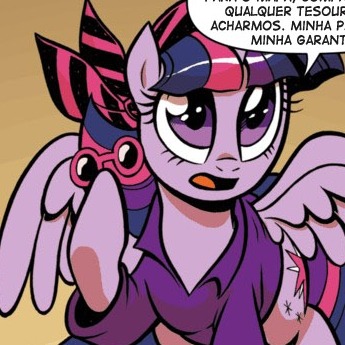
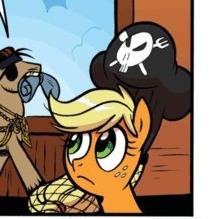





mlp comics icons !! (☆▽☆)
#mlp icons#mlp fandom#mlp g4#mlp art#mlp fim#mlp oc#mlp#brony#brony fandom#my little pony icons#my little pony#mlp comics#lgbtqia#lgbtq community#pride#socorro#twilight sparkle#pinkie pie icons#pinkie pie#rainbow dash#rarity#apple jack#fluttershy#princess cadence
98 notes
·
View notes